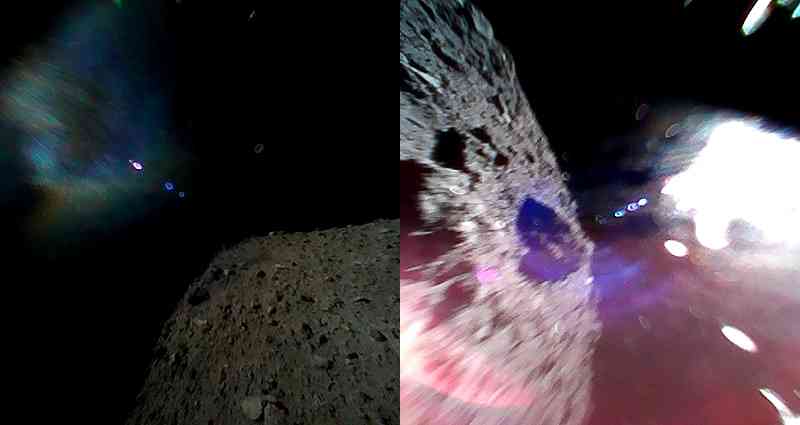Japan Successfully Lands 2 Rovers on Surface of Asteroid Ryugu



By Bryan Ke
September 24, 2018
After a four-year journey, Japan Aerospace Exploration Agency’s (JAXA) Hayabusa2 has successfully landed two rovers on the surface of carbonaceous near-Earth asteroid 162173 Ryugu.
The historic moment occurred on Friday when the MINERVA-II1 made a successful landing on the surface of Ryugu and deployed two small rovers called Rover-1A and Rover-1B, according to the mission’s official website.
This mission was the first-ever to deploy a rover and land on an asteroid as well as the “world’s first man-made object to explore movement on an asteroid surface” and take pictures of the asteroid’s surface.
After their deployment, the rovers sent pictures of the two compact mobile exploration robots back to Earth for everyone to see.
“I felt awed by what we had achieved in Japan. This is just a real charm of deep space exploration,” said Takashi Kubota, a spokesman for the space agency, CNN reported.
The Hayabusa2 spacecraft approached the 1-kilometer (3,280-feet) wide space rock around Thursday afternoon at the orbiting altitude of about 20 kilometers (12.4 miles). It sent a photo back to Earth as the spacecraft descended around 100 meters (328 feet) on the asteroid.
The rovers will remain on Ryugu to take samples and examine the space rock until December 2019 before Hayabusa2 departs the diamond-shaped asteroid to make its return to Earth sometime in 2020 bringing along the cargo from the expedition.
Scientists believe that the space rock may contain valuable data underneath its surface — information regarding the formation of the solar system billions of years ago.
In late October, Hayabusa2 is set to launch the third rover called MASCOT. During this phase of the mission, the spacecraft will reportedly detonate explosives on the asteroid to create a small crater so the rovers can take further samples.
Featured Images via Twitter / haya2e_jaxa
Share this Article
Share this Article